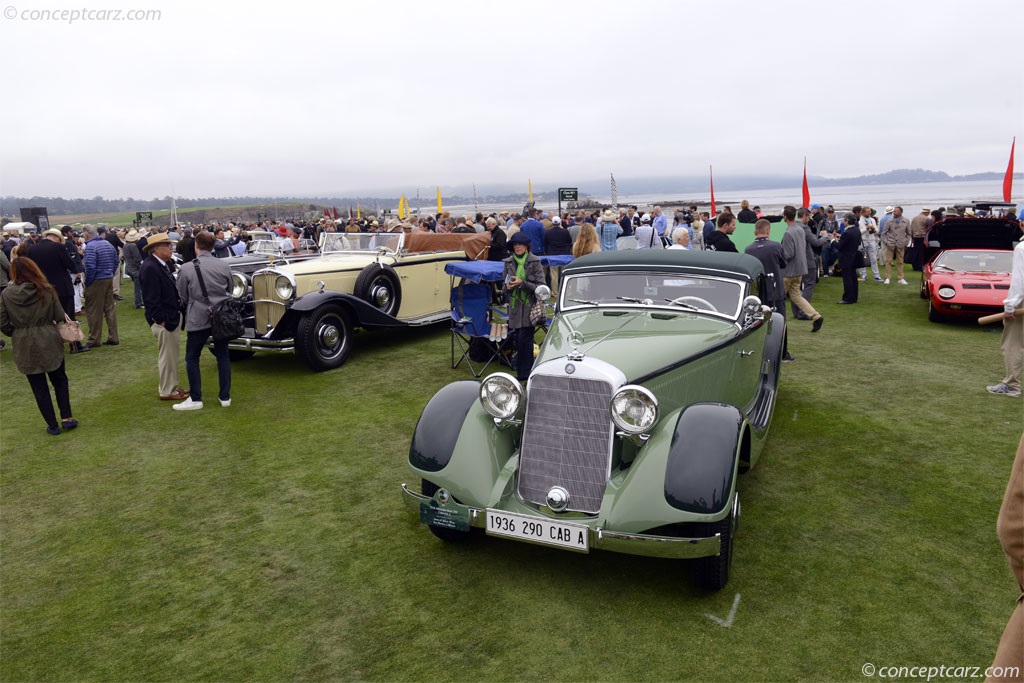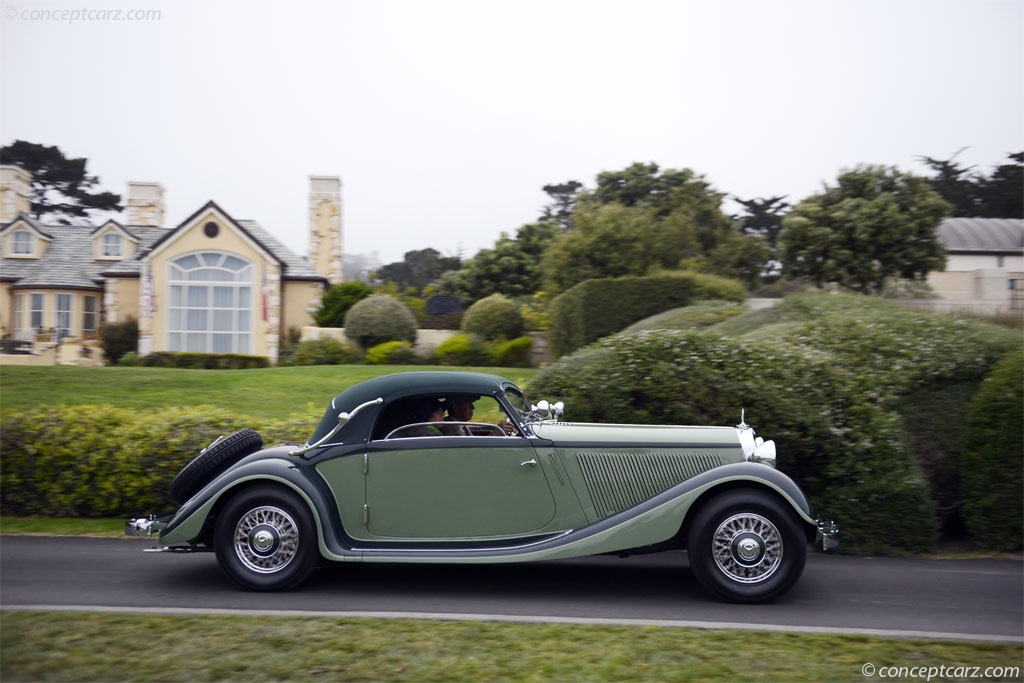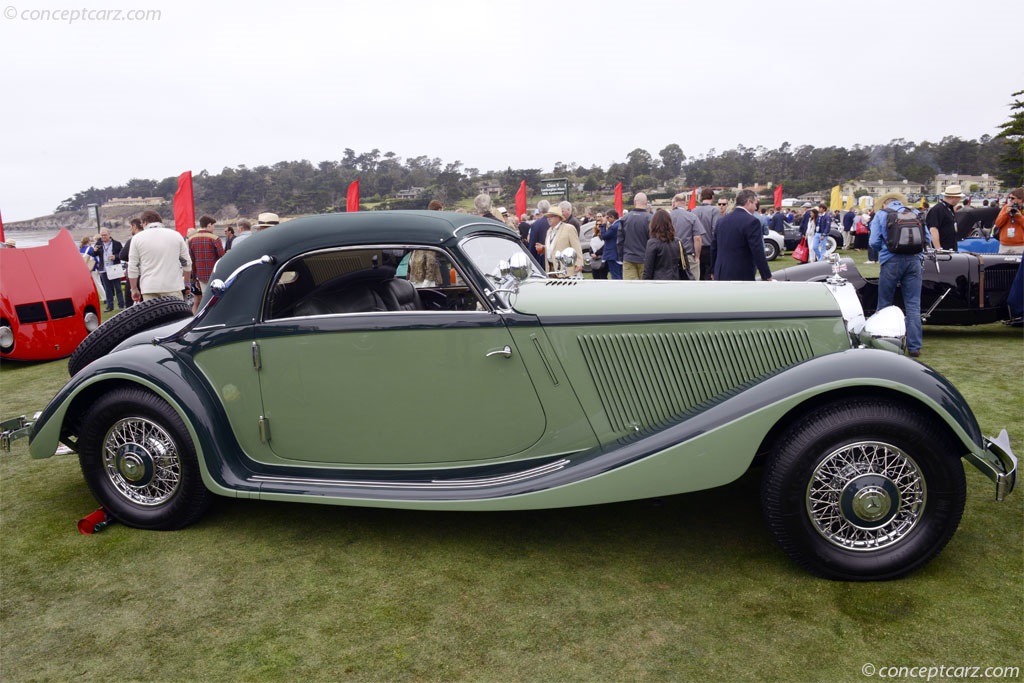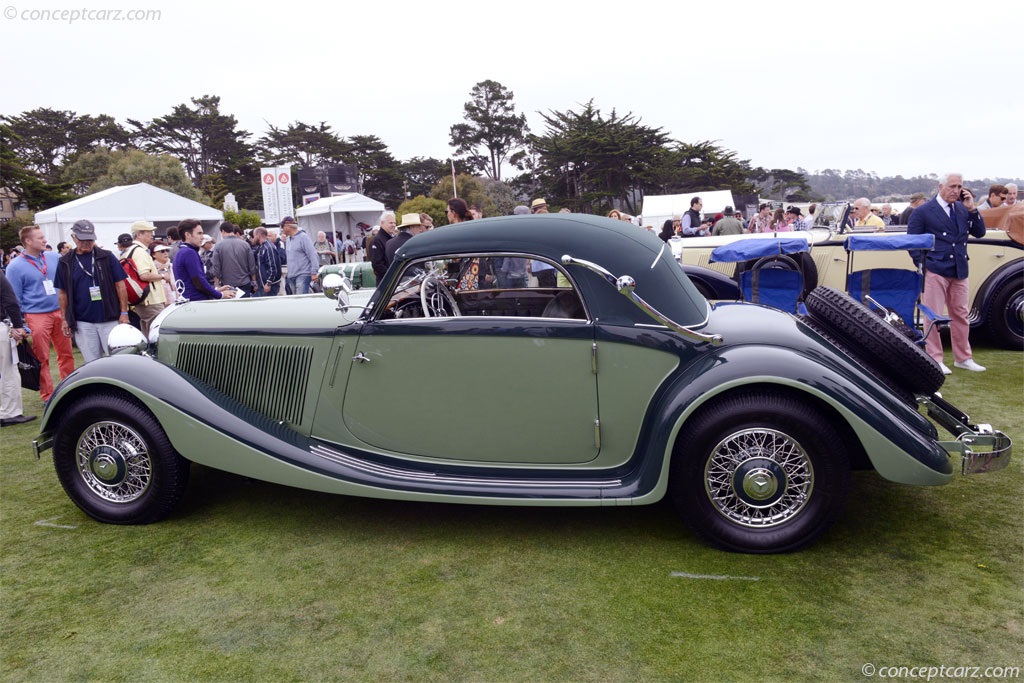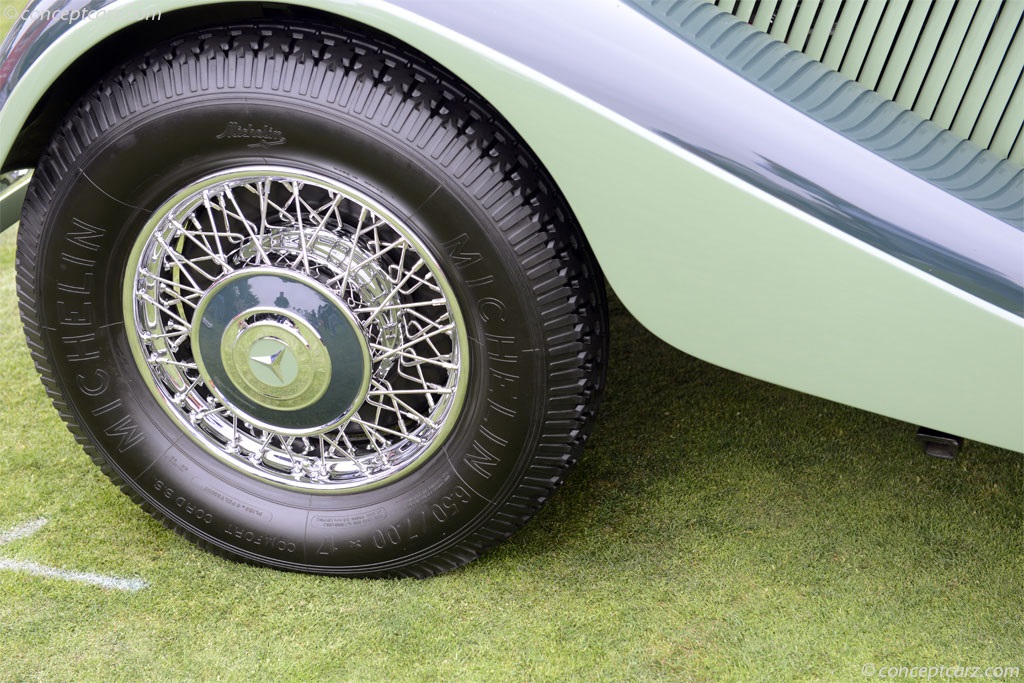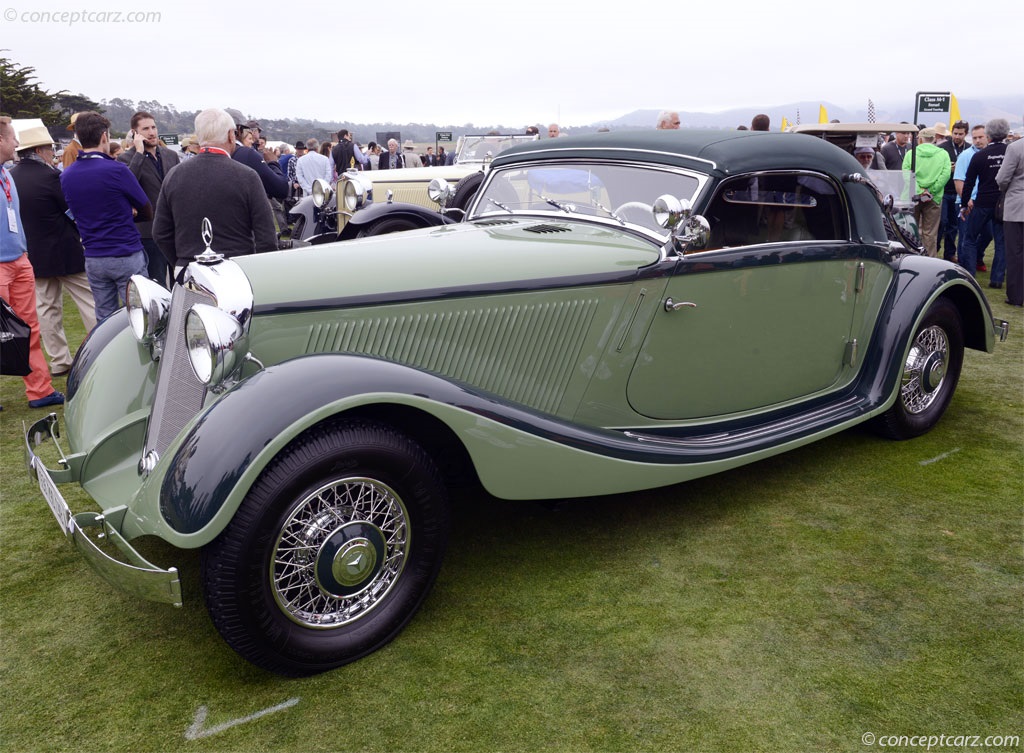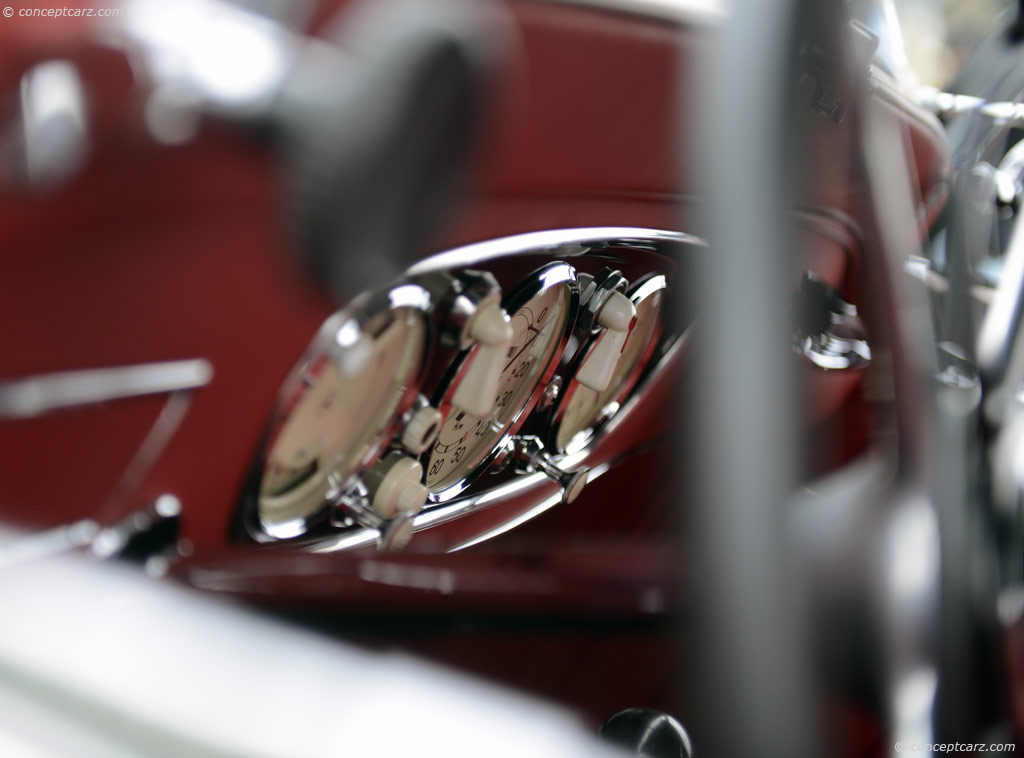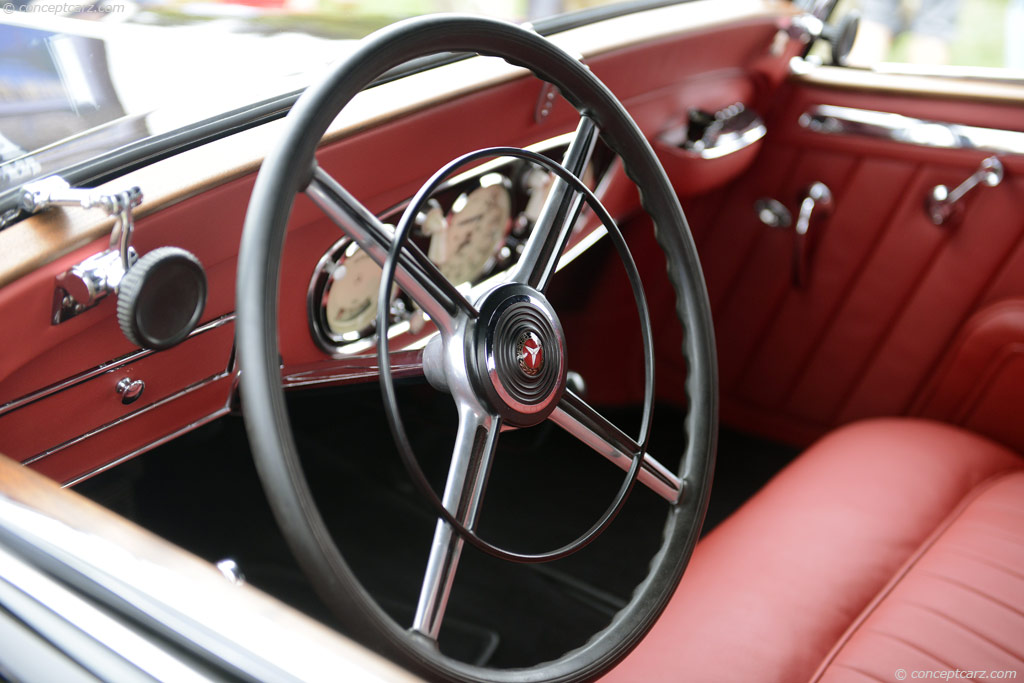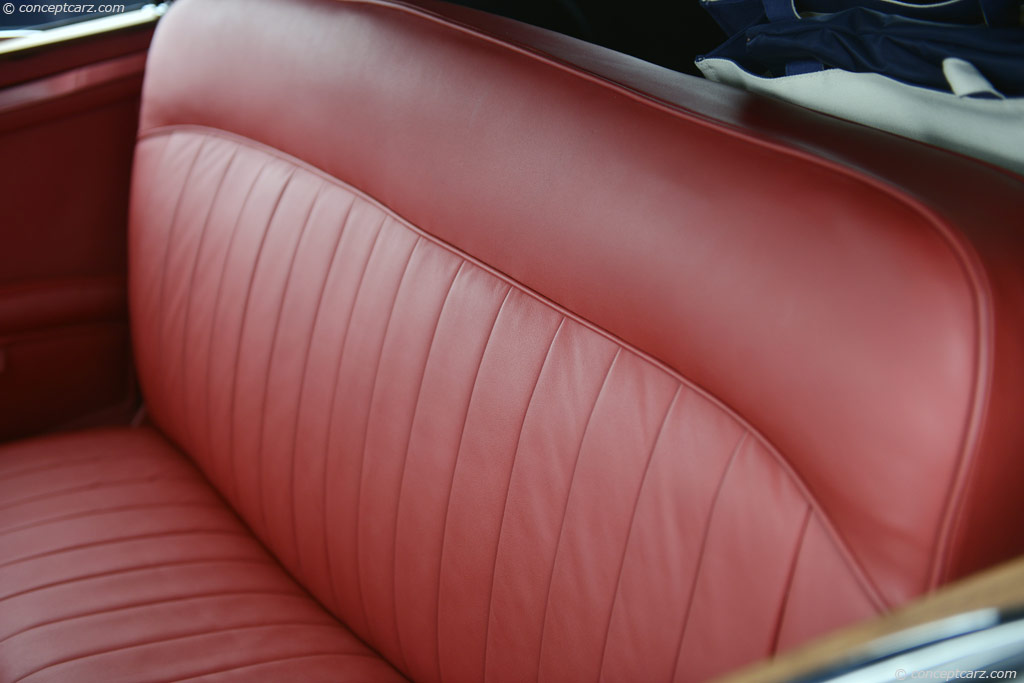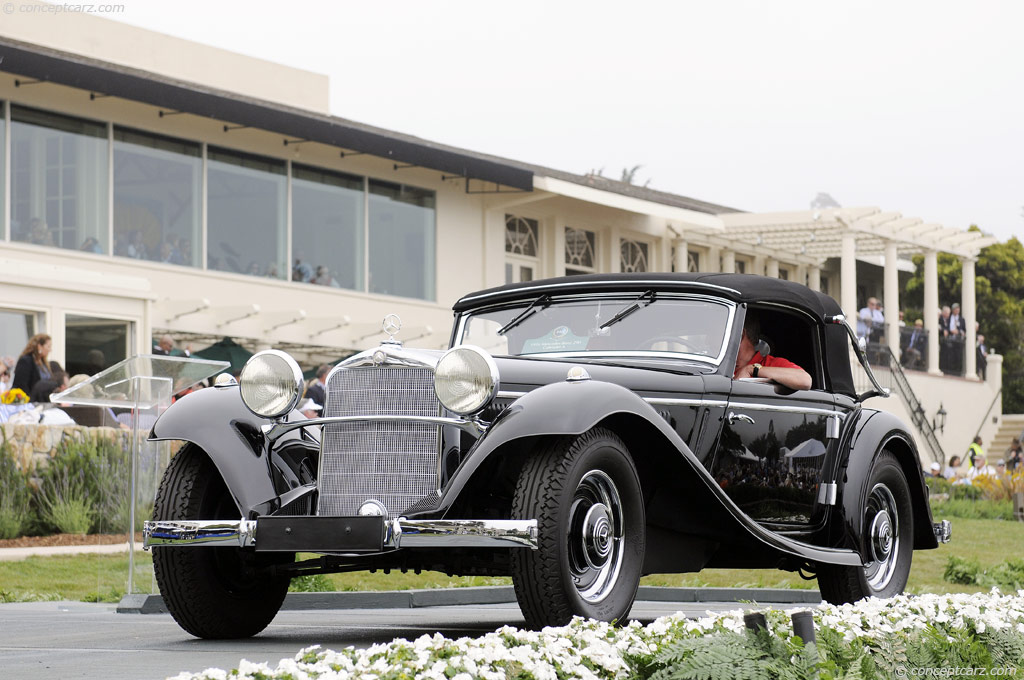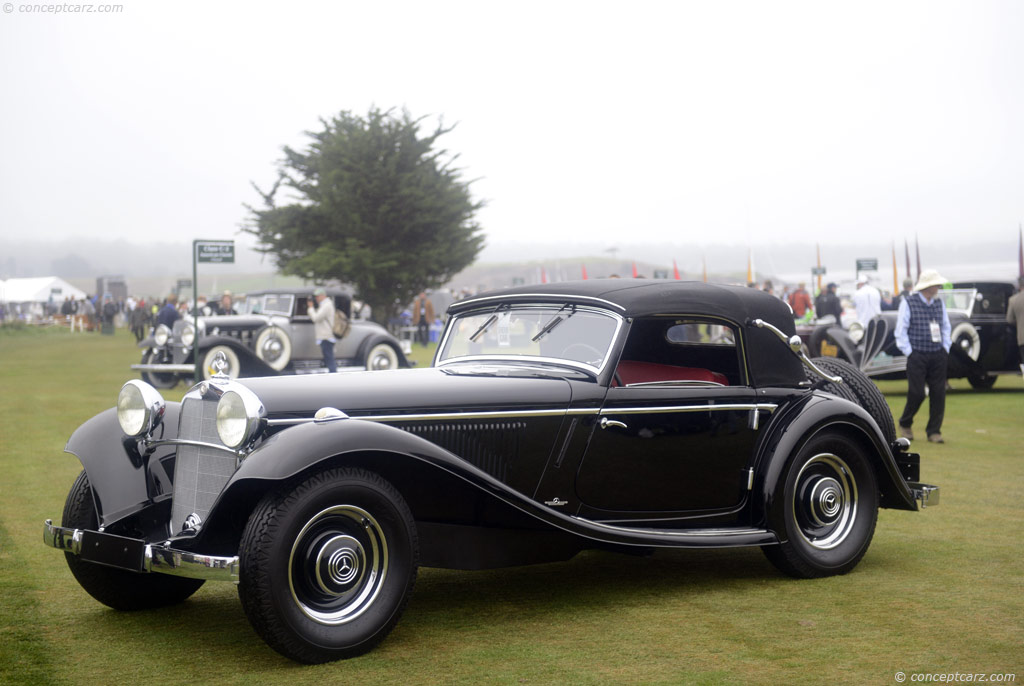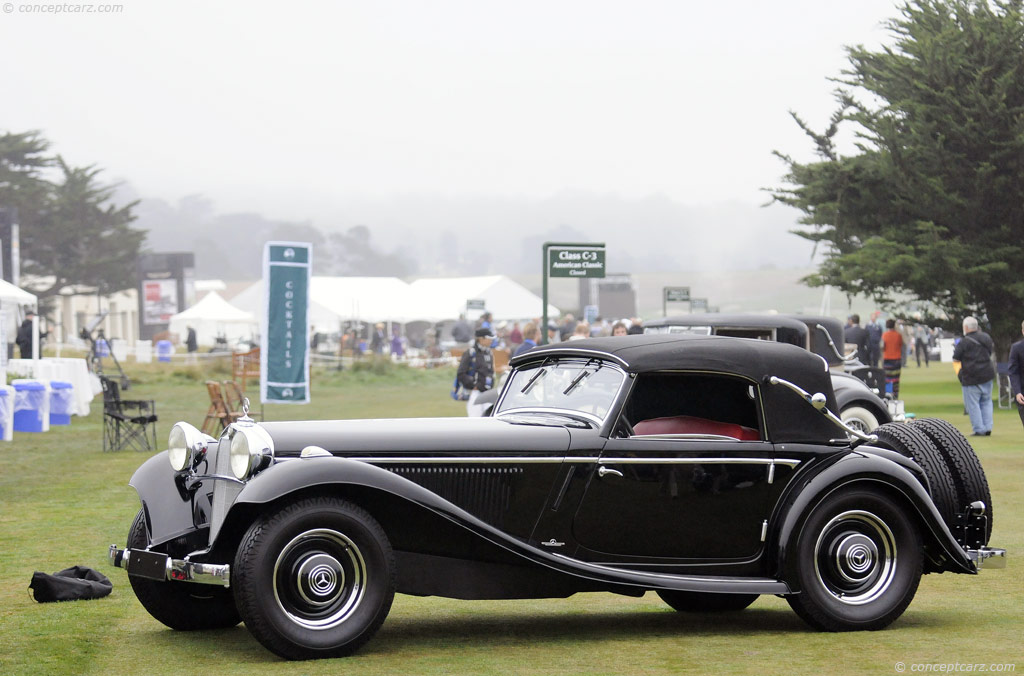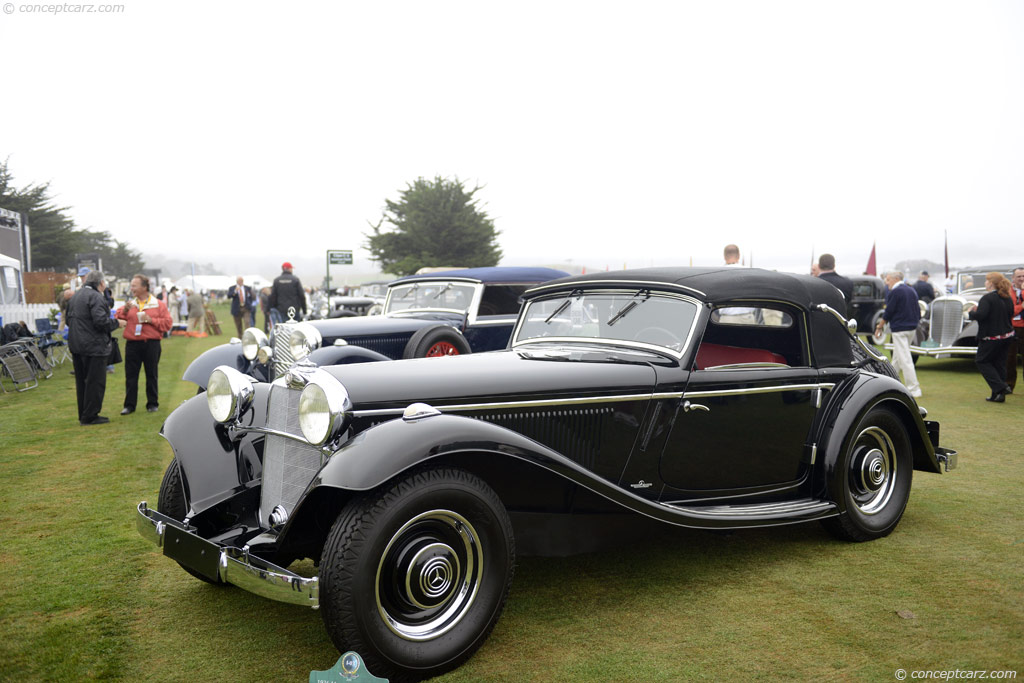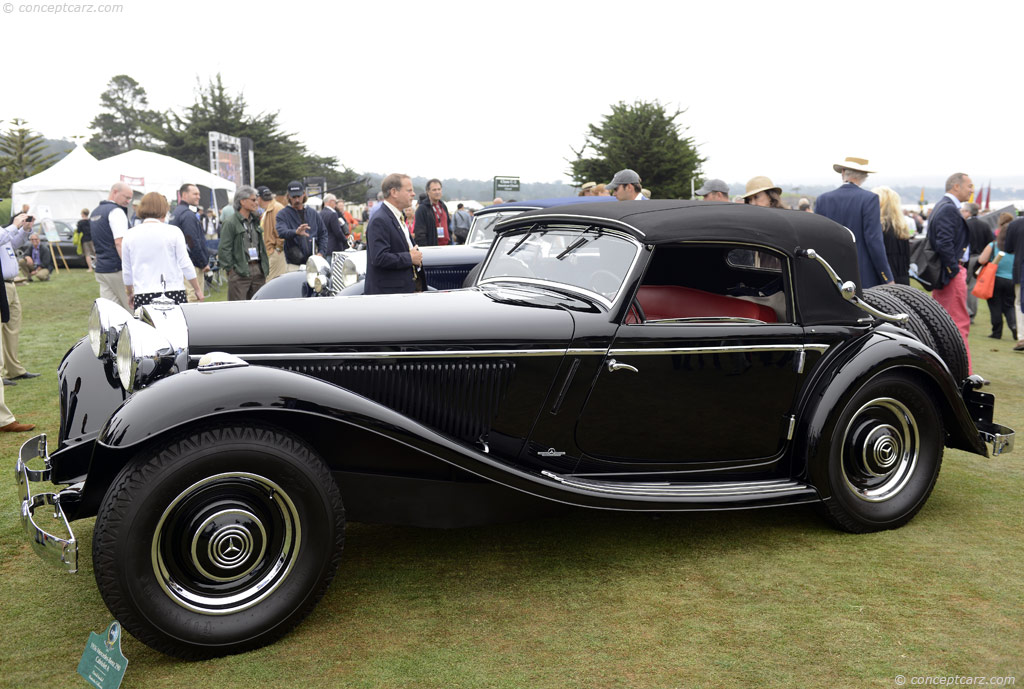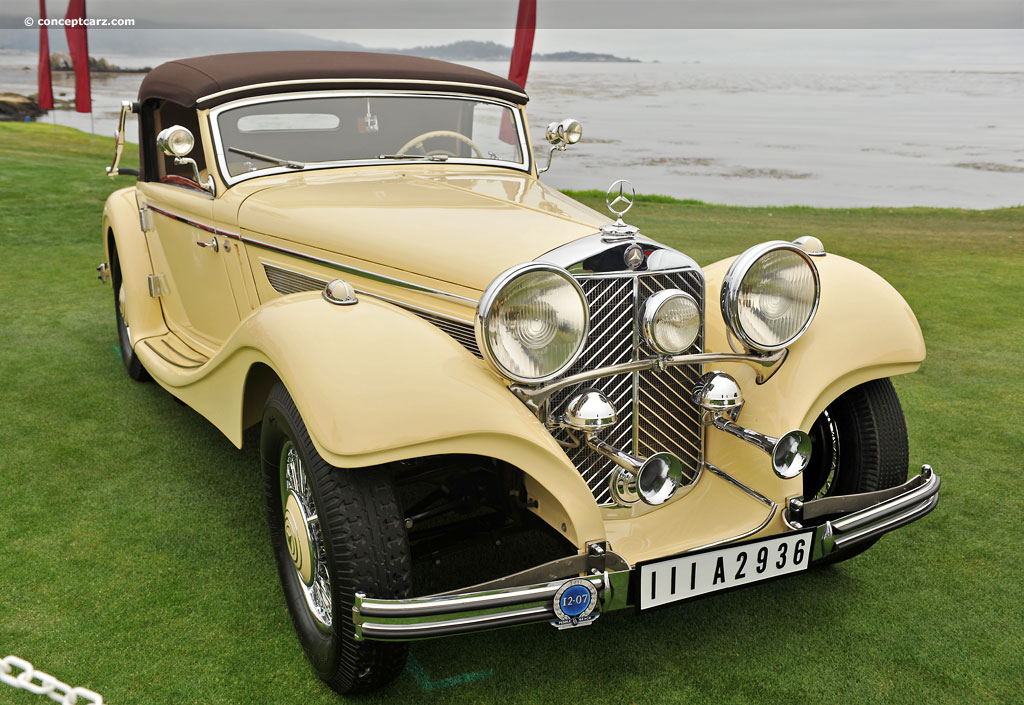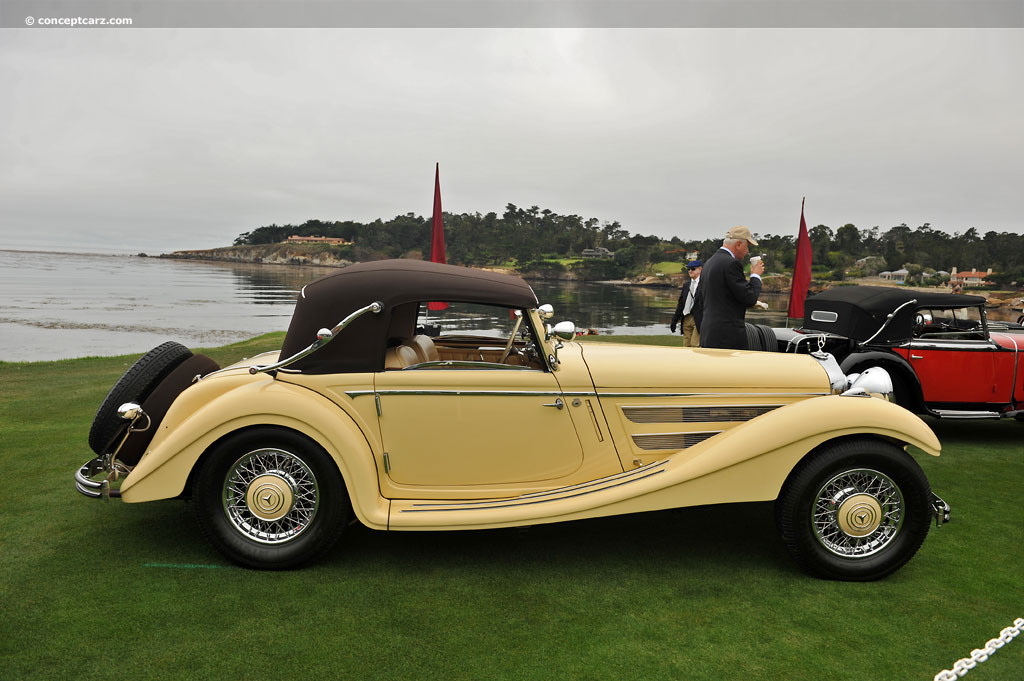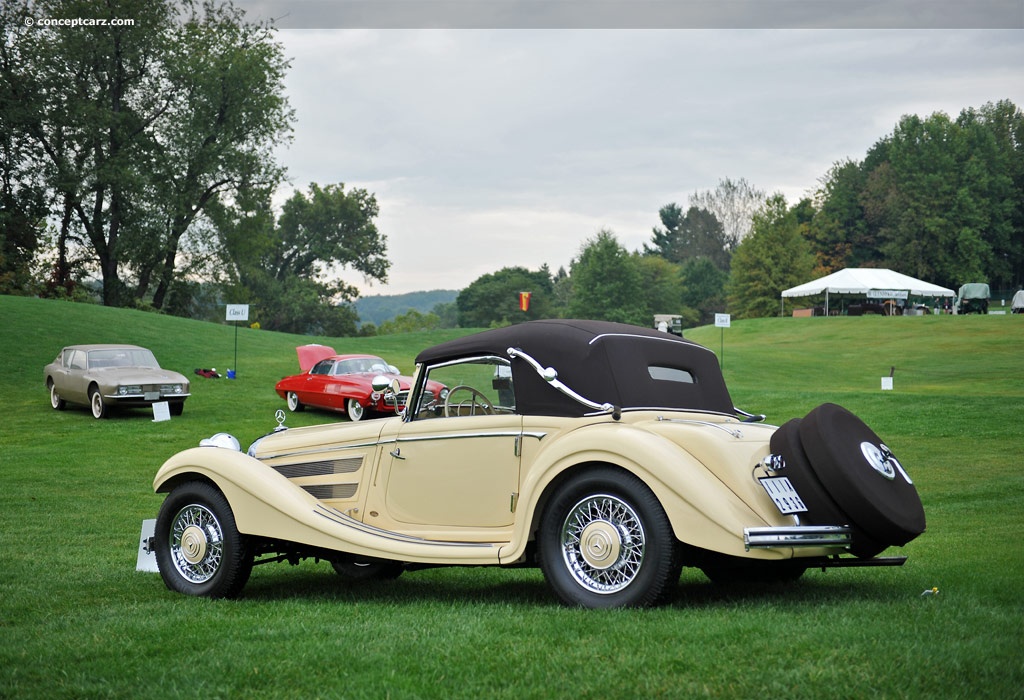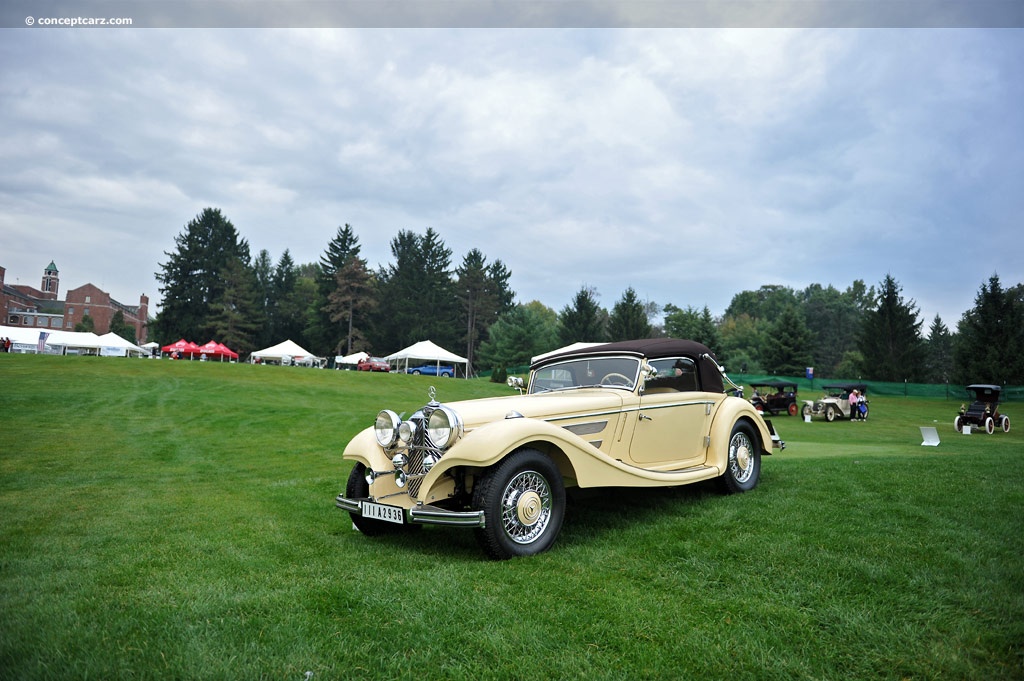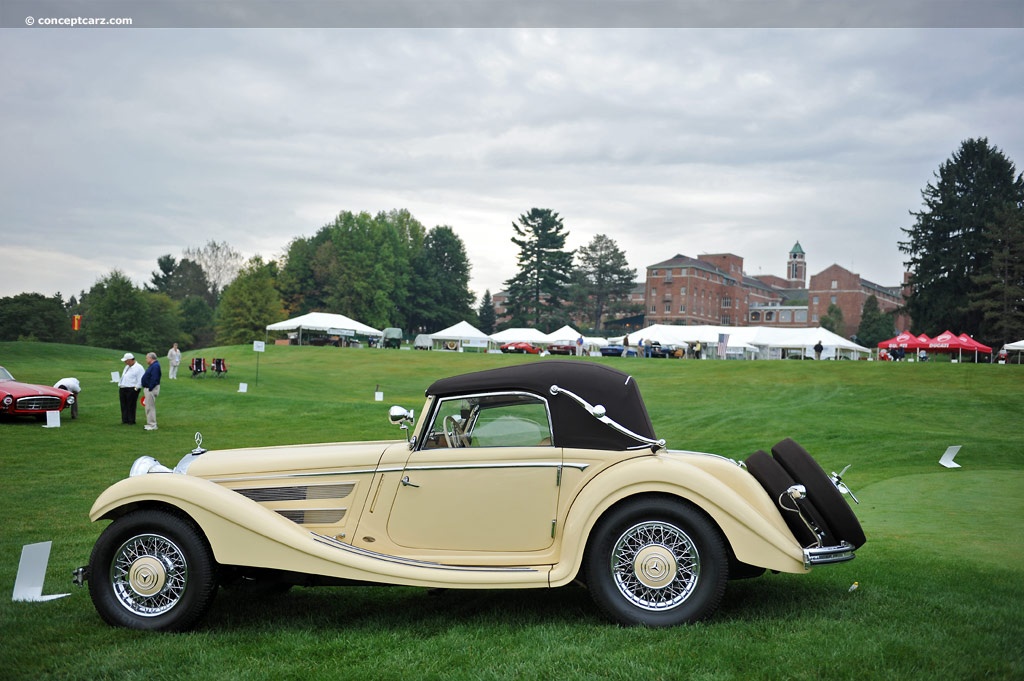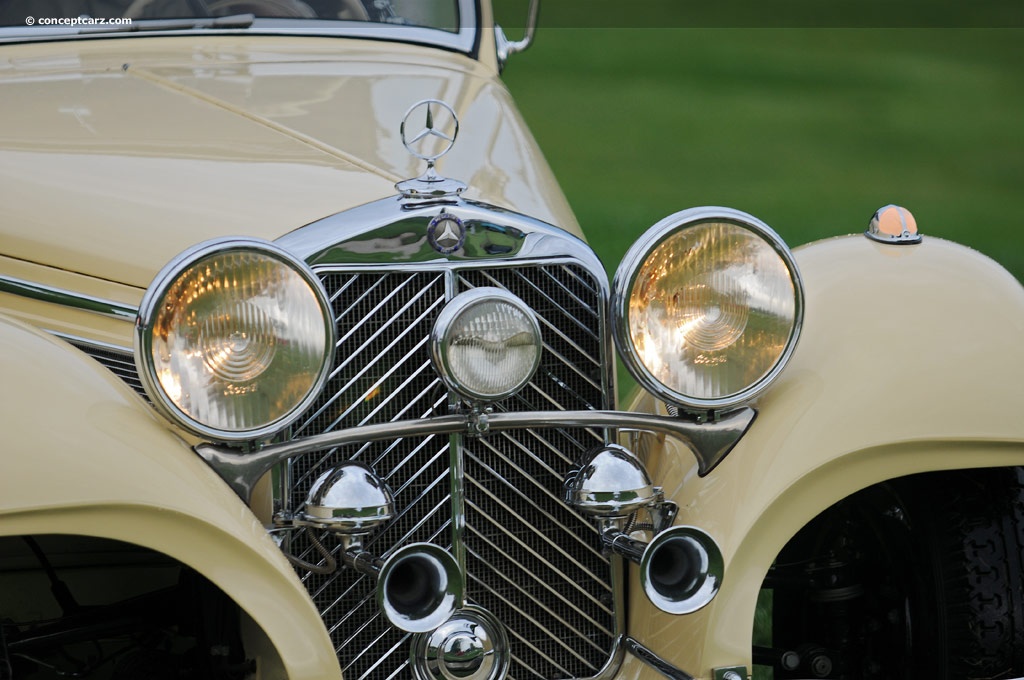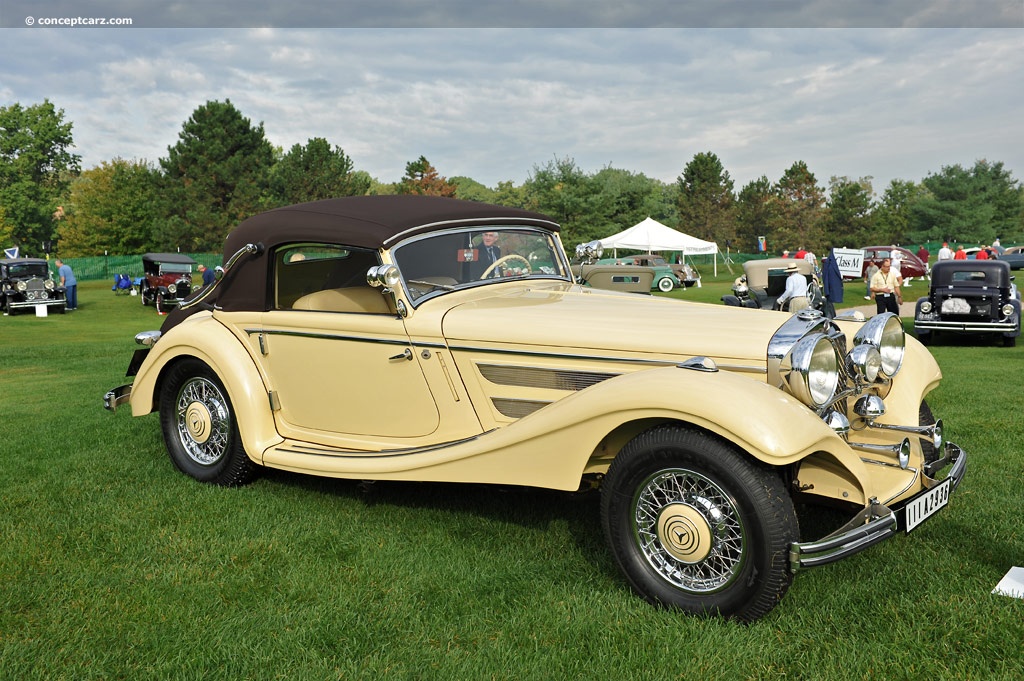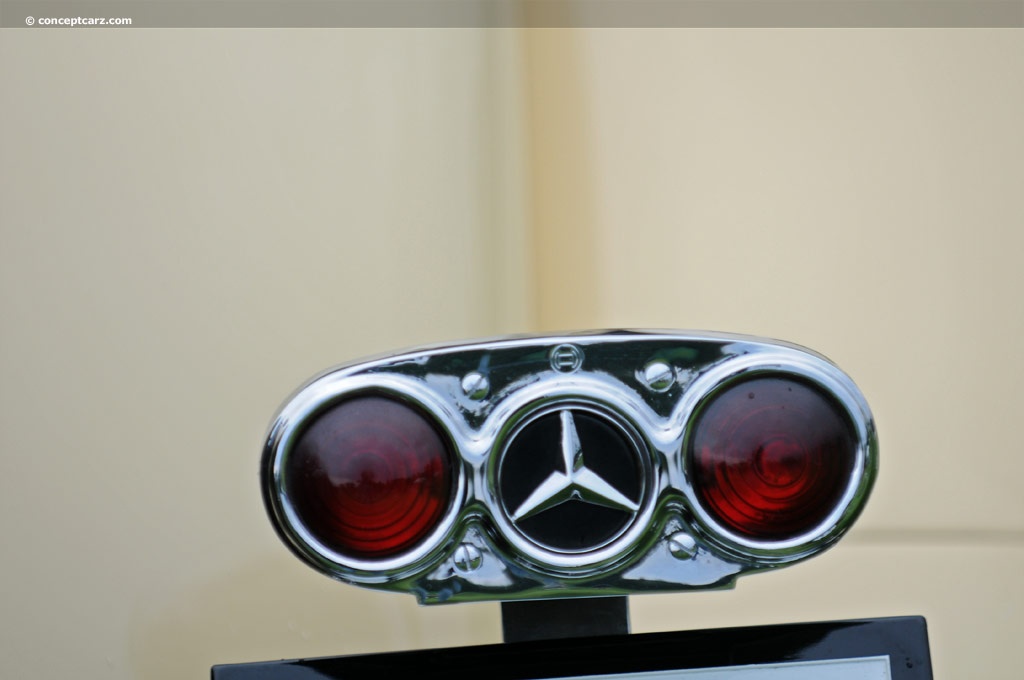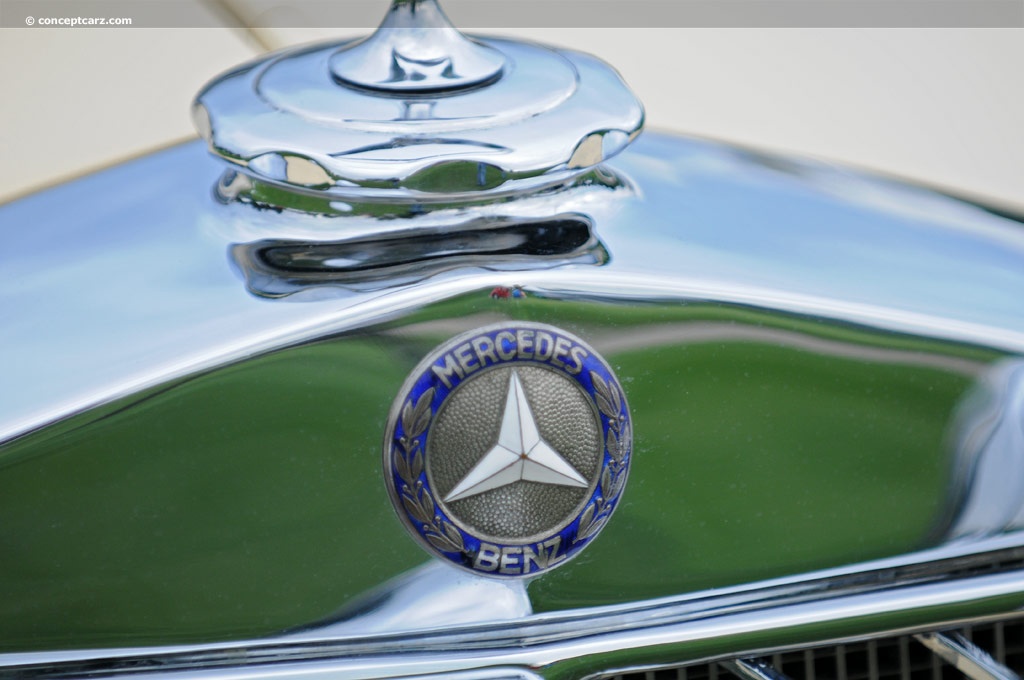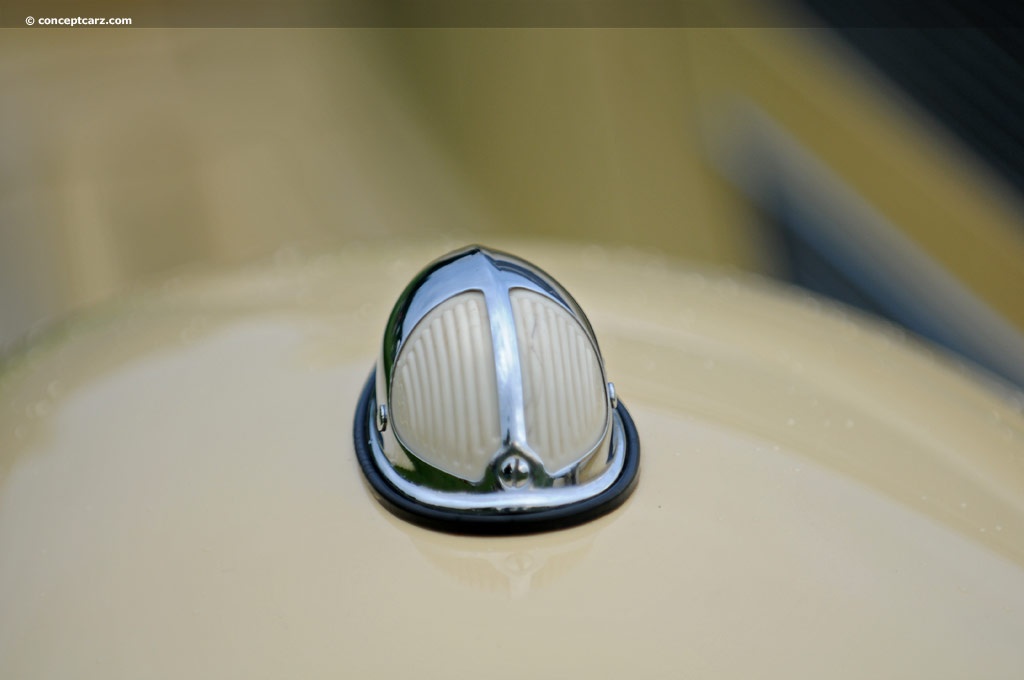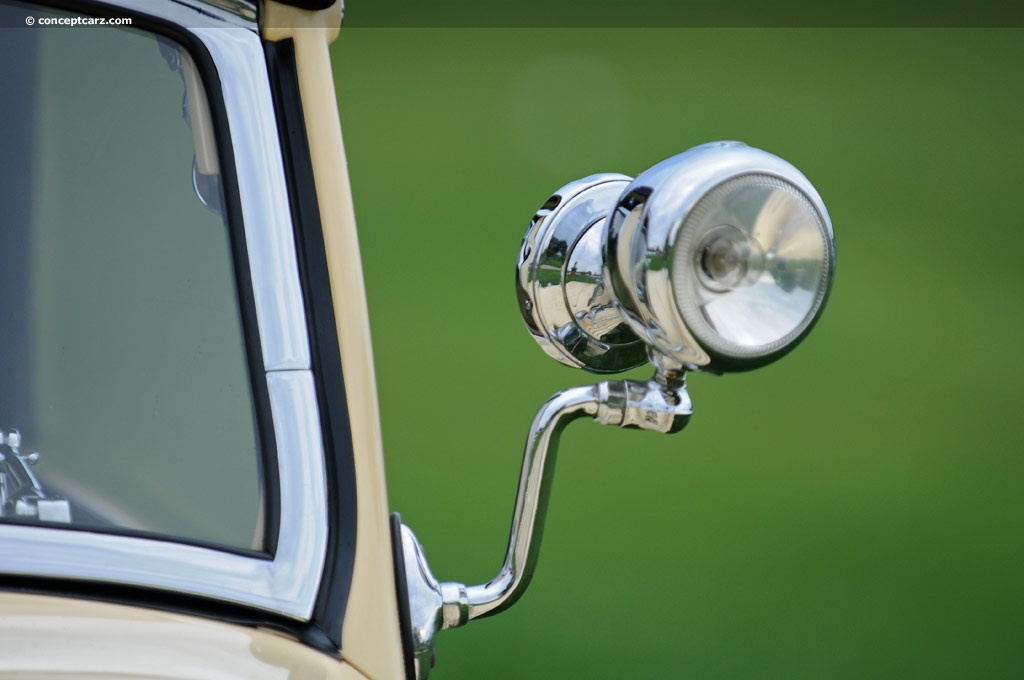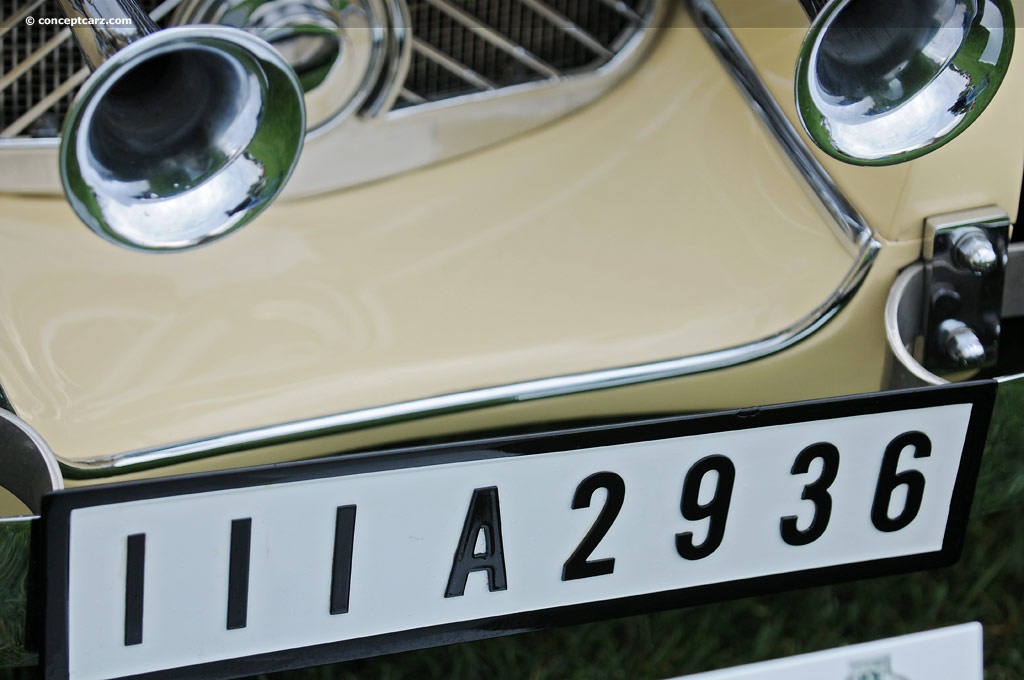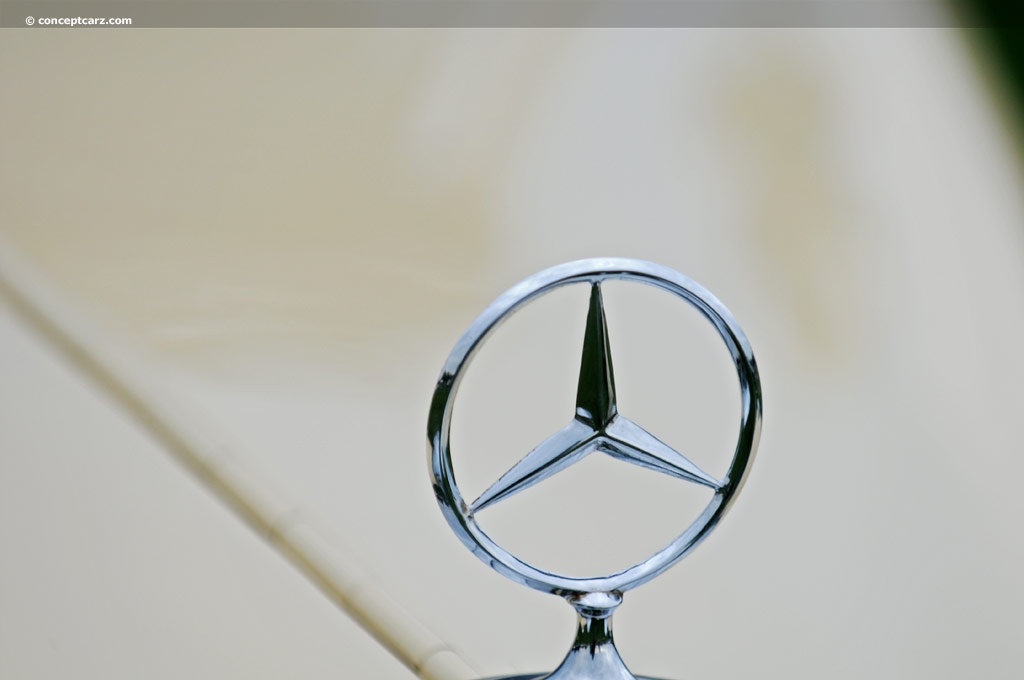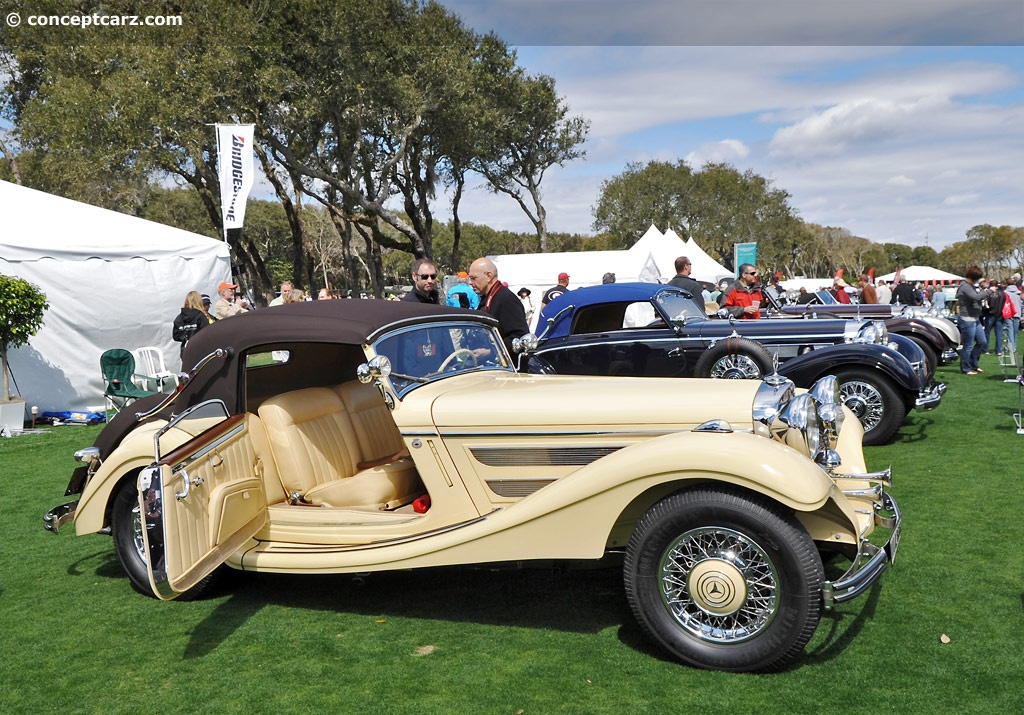Both the 230 and 290 were more traditional representations of Mercedes designs. The Mercedes-Benz 290 was produced from 1934 to 1936 with a total of 2,929 models produced. Vehicle types were the cabriolet, 2 doors (B, C, C lang cabriolet types), Saloon, 4 doors, 4 seats (streamline saloon types also). Engine types had a capacity of 2867 cc, with S6 SV capacity.
The 170 range that was unveiled in the new 1934 range was closely futuristic in its look and design. Rear-engined, the 170 H was very similar to the forthcoming VW Beetle. Not produced again until after 1939, the 170 range did not sell in large numbers.
Becoming a renowned motor vehicle, the 500 was a handsome, if a somewhat sinister looking vehicle to look at. The 500K was even more magnificent with a 3.8 liter straight eight engine that displaced a 5019 capacity and was fitted with a supercharger. In 1934, its available 160 bhp was a huge figure that was incredibly smooth to drive.
Used for only a few two-seater vehicles with special bodies, it was fitted with a short-wheelbase chassis. The radiator was placed back, right above the front axle, and these models carried the designations 500 K sports roadster, sports cabriolet and sports coupe. The chassis of the 500 K was complete with helical-spindle steering that had been adopted, though in a further refined form, from the earlier 380 series. This new double-wishbone axle was fitted with coil springs placed at the front, and the double-joint swing axle, complemented by double coil springs along with additional transverse balancing spring, placed at the rear.
With the mechanical parking brake placed on the rear wheels, the vacuum-boosted service brake acted hydraulically on all four wheels. The entire vehicle weighed 2,300 kilograms, with a chassis that weighed as much as 1,700 kilograms.
The elegance of the 500 K body was considered to be quite a vision that was unparalleled. The most ingenious coachbuilders in Sidelfingen are responsible for its design. Very few customers opted for bodywork tat tailored by independent bodybuilders, as the Sindelfingers rose above themselves in accommodation customers’ special wishes. A total of 342 units of the 500 K models were produced within two years.
In 1936, the 500 K was replaced by the 540 K with a new supercharged 180 hp engine in response to the virtually insatiable craving for performance. A total of 319 units of the 540 k were produced.
